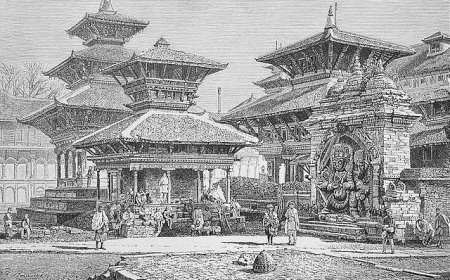The Traditional Art of Handicrafts in Nepal: From Pashmina Shawls to Thangka Paintings
Explore the rich cultural heritage of Nepal through the traditional art of handicrafts. From Pashmina shawls to Thangka paintings, discover the skilled craftsmanship and unique designs of Nepalese artisans.
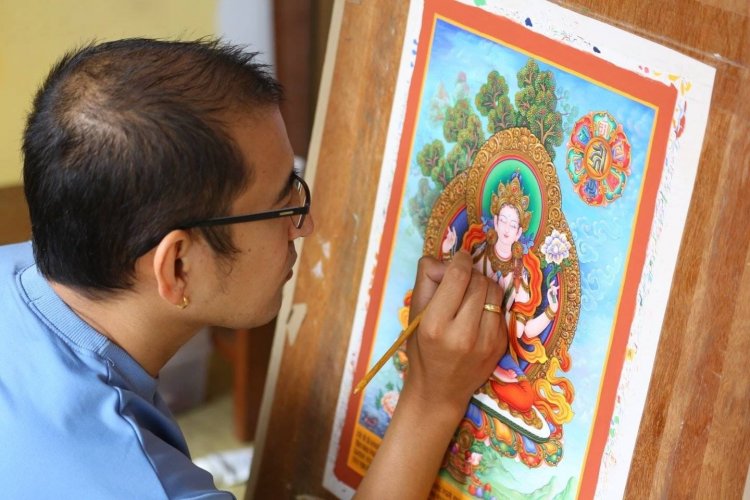
Nepal is known for its rich culture, history, and traditional art forms, particularly in the field of handicrafts. From intricate hand-woven textiles to intricate metalwork, the country has a long history of producing beautiful and unique handicrafts. In this article, we will take a closer look at some of the most popular traditional art forms in Nepal, exploring their history, significance, and techniques.
-
Pashmina Shawls
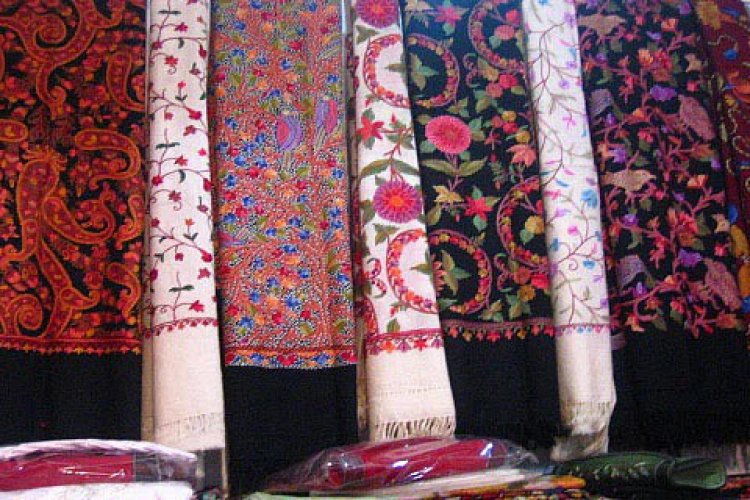 Pashmina shawls are one of the most popular handicrafts in Nepal and are known for their softness, warmth, and durability. These shawls are made from the soft undercoat of the Himalayan mountain goat and are hand-woven by skilled artisans. The shawls are available in a wide range of colors and designs, and they are considered a luxury item.
Pashmina shawls are one of the most popular handicrafts in Nepal and are known for their softness, warmth, and durability. These shawls are made from the soft undercoat of the Himalayan mountain goat and are hand-woven by skilled artisans. The shawls are available in a wide range of colors and designs, and they are considered a luxury item. -
Thangka Paintings
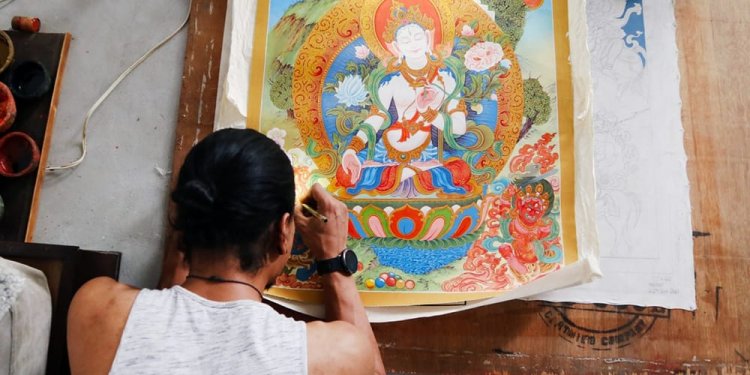 Thangka paintings are traditional Tibetan Buddhist paintings that are known for their intricate details and vibrant colors. These paintings are created on cotton or silk canvas and are typically painted with natural pigments. Thangka paintings are typically used in religious ceremonies and are considered sacred.
Thangka paintings are traditional Tibetan Buddhist paintings that are known for their intricate details and vibrant colors. These paintings are created on cotton or silk canvas and are typically painted with natural pigments. Thangka paintings are typically used in religious ceremonies and are considered sacred. -
Metalwork
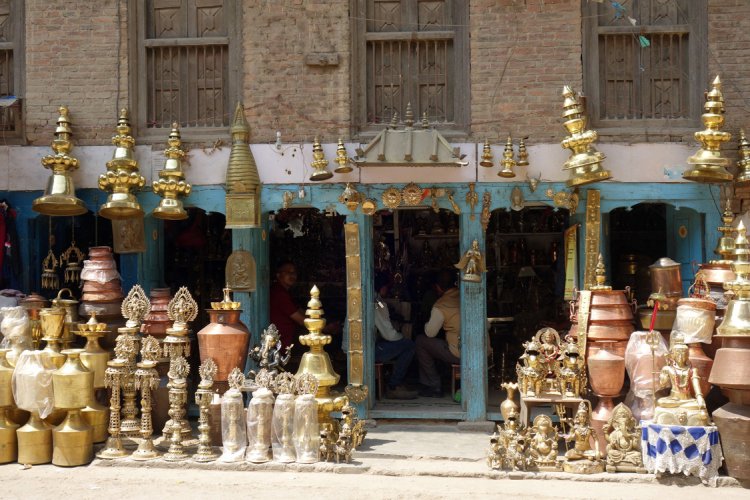 Nepal has a long history of metalworking, and the country is known for its intricate and detailed metalwork. From traditional bronze statues to modern jewelry, Nepalese metalwork is renowned for its quality and craftsmanship. The artisans use traditional techniques such as lost-wax casting and chasing to create intricate designs.
Nepal has a long history of metalworking, and the country is known for its intricate and detailed metalwork. From traditional bronze statues to modern jewelry, Nepalese metalwork is renowned for its quality and craftsmanship. The artisans use traditional techniques such as lost-wax casting and chasing to create intricate designs. -
Woodcarvings
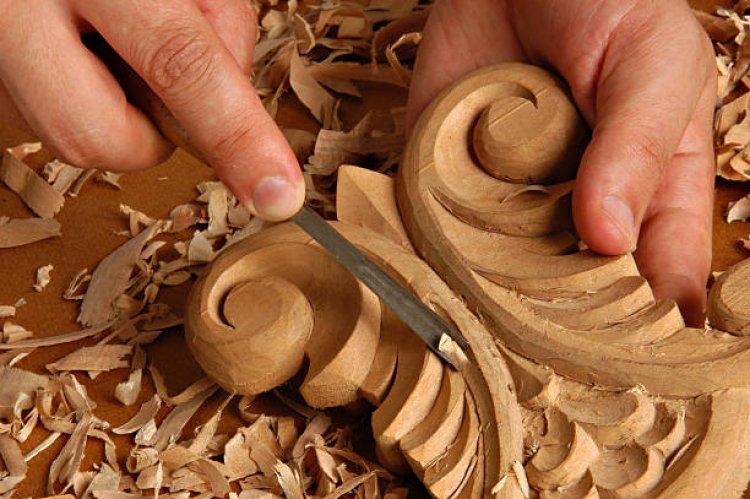 Nepal is also known for its woodcarvings, which are typically created from the wood of the sal tree. These carvings are often used in traditional architecture and are known for their intricate details and beautiful designs. The artisans use traditional techniques such as chiseling and carving to create intricate designs.
Nepal is also known for its woodcarvings, which are typically created from the wood of the sal tree. These carvings are often used in traditional architecture and are known for their intricate details and beautiful designs. The artisans use traditional techniques such as chiseling and carving to create intricate designs. -
Hand-woven Textiles
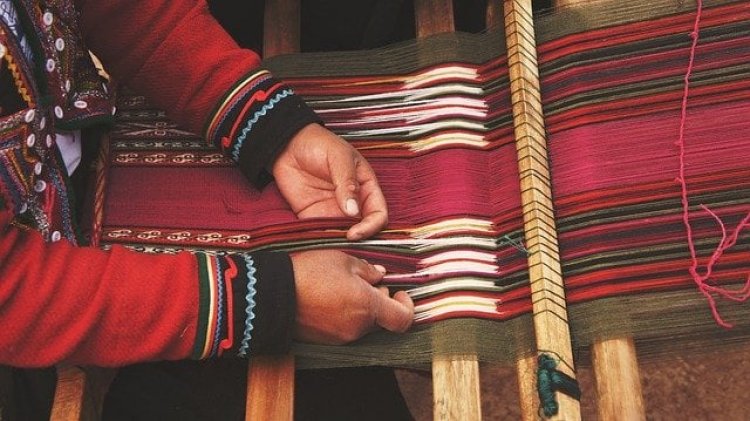 Nepal is known for its hand-woven textiles, which are created using traditional techniques and natural dyes. From intricate silk fabrics to coarse woolen blankets, Nepalese textiles are renowned for their quality and craftsmanship. The artisans use traditional techniques such as spinning and weaving to create intricate designs.
Nepal is known for its hand-woven textiles, which are created using traditional techniques and natural dyes. From intricate silk fabrics to coarse woolen blankets, Nepalese textiles are renowned for their quality and craftsmanship. The artisans use traditional techniques such as spinning and weaving to create intricate designs. -
Ceramics
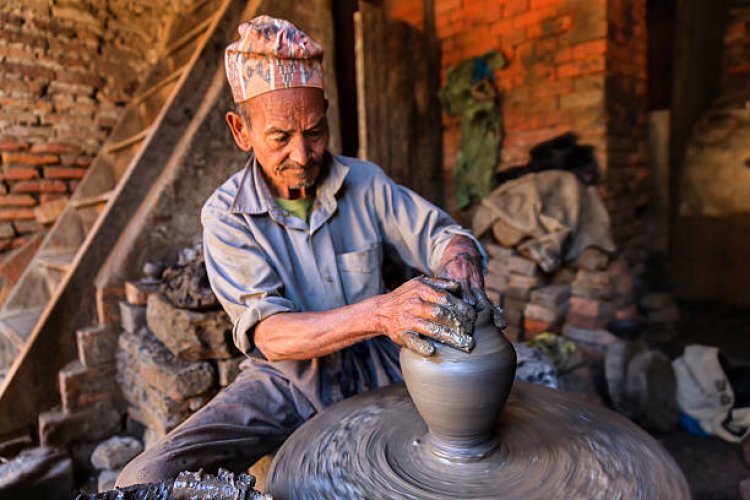 Nepal is also known for its ceramics, which are typically created from clay found in the Kathmandu Valley. These ceramics are known for their unique designs and vibrant colors, and they are often used in traditional architecture and as decorative pieces. The artisans use traditional techniques such as hand-forming and glazing to create intricate designs.
Nepal is also known for its ceramics, which are typically created from clay found in the Kathmandu Valley. These ceramics are known for their unique designs and vibrant colors, and they are often used in traditional architecture and as decorative pieces. The artisans use traditional techniques such as hand-forming and glazing to create intricate designs. -
Paper Mache
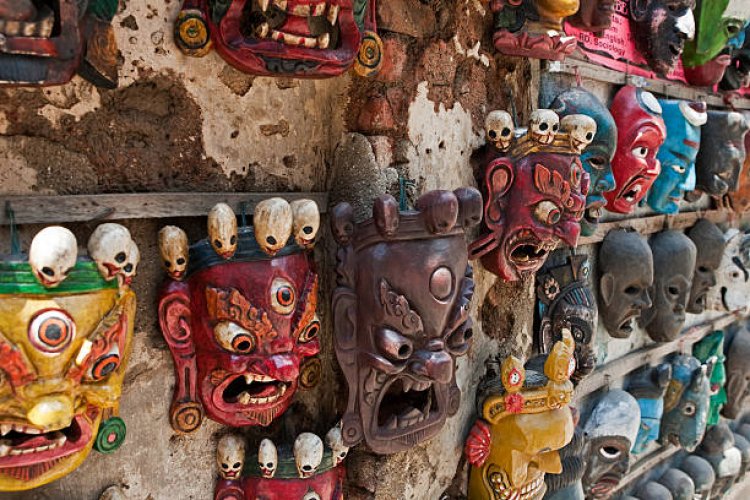 Paper Mache is another popular traditional art form in Nepal, which involves molding wet paper and glue into various shapes and sizes. The paper mache objects are then painted with bright colors and intricate designs. This art form is commonly used to create various decorative pieces, such as lanterns and masks.
Paper Mache is another popular traditional art form in Nepal, which involves molding wet paper and glue into various shapes and sizes. The paper mache objects are then painted with bright colors and intricate designs. This art form is commonly used to create various decorative pieces, such as lanterns and masks. -
Dhaka Fabric
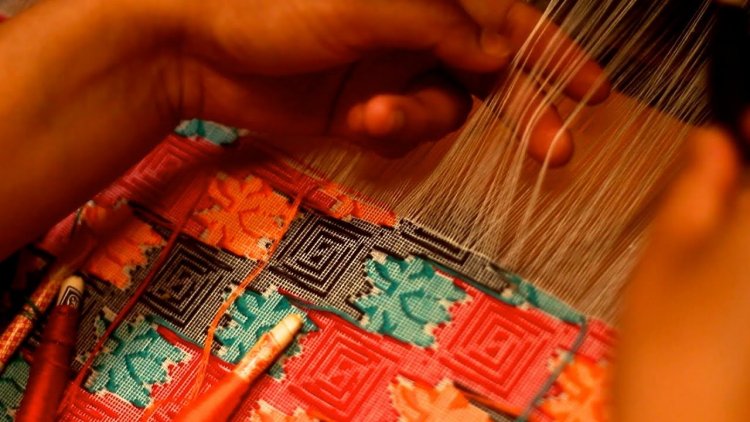 Dhaka fabric is a traditional handwoven textile that is made from cotton or silk. The fabric is known for its intricate designs and patterns, which are created using a traditional technique called "extra weft". Dhaka fabric is commonly used to make clothing, such as saris and lungis, and is also used to make bags and other accessories.
Dhaka fabric is a traditional handwoven textile that is made from cotton or silk. The fabric is known for its intricate designs and patterns, which are created using a traditional technique called "extra weft". Dhaka fabric is commonly used to make clothing, such as saris and lungis, and is also used to make bags and other accessories. -
Bamboo Crafts
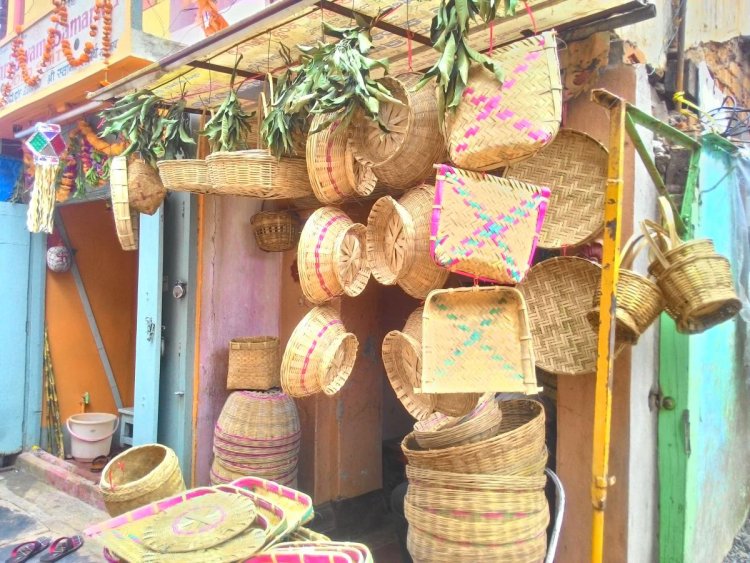 Bamboo crafts are also a popular traditional art form in Nepal and are made from locally available bamboo. These crafts are known for their intricate designs and patterns, which are created using traditional techniques such as weaving and carving. Bamboo crafts are commonly used to make baskets, furniture, and other decorative pieces.
Bamboo crafts are also a popular traditional art form in Nepal and are made from locally available bamboo. These crafts are known for their intricate designs and patterns, which are created using traditional techniques such as weaving and carving. Bamboo crafts are commonly used to make baskets, furniture, and other decorative pieces. -
Carpets
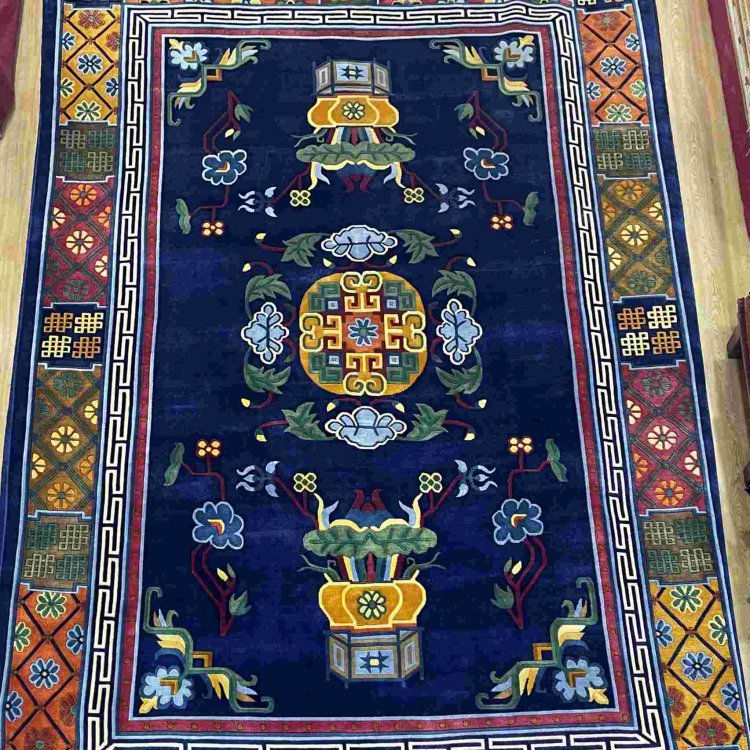 Nepalese carpets are known for their intricate designs, vibrant colors, and high quality. These carpets are typically made from wool and hand-knotted by skilled artisans. Nepalese carpets are popular as decorative pieces and are often used in traditional architecture.
Nepalese carpets are known for their intricate designs, vibrant colors, and high quality. These carpets are typically made from wool and hand-knotted by skilled artisans. Nepalese carpets are popular as decorative pieces and are often used in traditional architecture.
In conclusion, Nepal has a rich history and culture of traditional art forms, particularly in the field of handicrafts. From Pashmina shawls to Thangka paintings, the country is home to a wide variety of beautiful and unique handicrafts that are renowned for their quality and craftsmanship. These art forms are an important part of Nepal's culture and heritage and are a great way to gain a deeper understanding of the country's history and traditions. Handicrafts are also a great way to support the local artisans and their traditional techniques and to bring a piece of Nepal's culture back home as a souvenir.
What's Your Reaction?



























































































